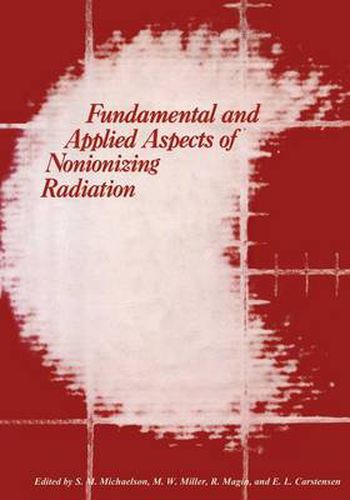Readings Newsletter
Become a Readings Member to make your shopping experience even easier.
Sign in or sign up for free!
You’re not far away from qualifying for FREE standard shipping within Australia
You’ve qualified for FREE standard shipping within Australia
The cart is loading…






This title is printed to order. This book may have been self-published. If so, we cannot guarantee the quality of the content. In the main most books will have gone through the editing process however some may not. We therefore suggest that you be aware of this before ordering this book. If in doubt check either the author or publisher’s details as we are unable to accept any returns unless they are faulty. Please contact us if you have any questions.
During the last 30 years, there has been a remarkable devel opment and increase in the number of processes and devices that utilize or emit non-ionizing radiant energies such as micro waves, a form of electromagnetic wave energy and ultrasound representative of mechanical vibration. These energies are used in all sectors of our society for military, industrial, telecommunications, medical, and consumer applications. More recently, the use of ultrasound in biology and medicine has been considerably expanded. These increases in sources of non ionizing radiant energy have resulted in growing interest on the part of government regulatory agencies, industrial and mili tary physicians, research workers, clinicians, and even environ mentalists. Although there is information on biologic effects and potential hazards to man from exposure to microwaves or ultrasound, considerable confusion and misinformation has permeated not only the public press but also some scientific and technical publications. Interest in the biologic effects of high frequency currents developed in the beginning of the present century. This was followed by the introduction of u1trashortwave therapy. During the latter part of World War II, the U. S. military services became interested in the possible hazards to personnel working around microwave sources, and the Office of Naval Research of the U. S. Navy began to sponsor research on the biologic effects of microwaves in 1948. In 1956, the U. S.
$9.00 standard shipping within Australia
FREE standard shipping within Australia for orders over $100.00
Express & International shipping calculated at checkout
This title is printed to order. This book may have been self-published. If so, we cannot guarantee the quality of the content. In the main most books will have gone through the editing process however some may not. We therefore suggest that you be aware of this before ordering this book. If in doubt check either the author or publisher’s details as we are unable to accept any returns unless they are faulty. Please contact us if you have any questions.
During the last 30 years, there has been a remarkable devel opment and increase in the number of processes and devices that utilize or emit non-ionizing radiant energies such as micro waves, a form of electromagnetic wave energy and ultrasound representative of mechanical vibration. These energies are used in all sectors of our society for military, industrial, telecommunications, medical, and consumer applications. More recently, the use of ultrasound in biology and medicine has been considerably expanded. These increases in sources of non ionizing radiant energy have resulted in growing interest on the part of government regulatory agencies, industrial and mili tary physicians, research workers, clinicians, and even environ mentalists. Although there is information on biologic effects and potential hazards to man from exposure to microwaves or ultrasound, considerable confusion and misinformation has permeated not only the public press but also some scientific and technical publications. Interest in the biologic effects of high frequency currents developed in the beginning of the present century. This was followed by the introduction of u1trashortwave therapy. During the latter part of World War II, the U. S. military services became interested in the possible hazards to personnel working around microwave sources, and the Office of Naval Research of the U. S. Navy began to sponsor research on the biologic effects of microwaves in 1948. In 1956, the U. S.